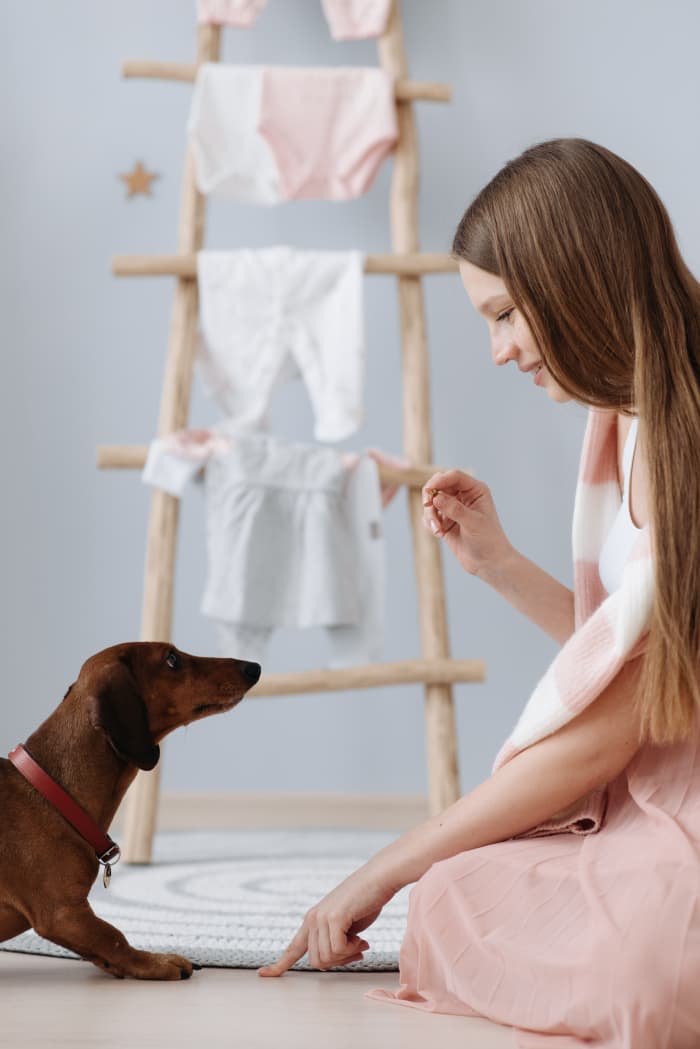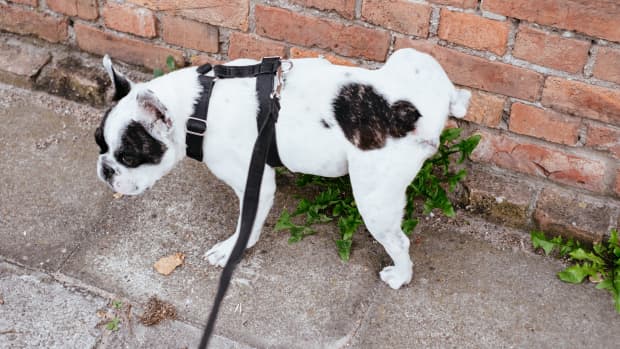Do you want to train your dog at home without spending a fortune on professional trainers? Would you like to teach them various skills and behaviors that will make life easier and more enjoyable? If you answered yes, you’ll enjoy these beginner tips for dog training at home. They are based on positive reinforcement, which is a proven method that uses rewards to motivate your dog and keep him happy. You’ll see how it all works in practice by reading an example of how I taught my dog to lie down on command. I think you’ll agree these tips are easy to follow and make dog training fun for both you and your pet.
Positive Reinforcement and the Science Behind It
Positive reinforcement is about rewarding your dog for doing something right. The reward could be a treat, praise, play, or a toy – whatever your dog wants to work for.
Some people may think positive reinforcement training is just a way of buying obedience with treats. But that’s not true. It is a scientific method of teaching your dog, and it works very well.
The method works on “operant conditioning”. In simple terms, this means your dog learns to associate behavior with its consequences. Dogs exhibit behaviors more frequently when the results are positive and less frequently when negative.
So, if your dog sits when you ask him to and gets a treat, he will be more likely to sit again in the future. But if your dog jumps on you when you come home and you ignore him, he will be less likely to jump again.
Science shows that positive reinforcement training is effective, humane, and ethical. It does not involve force, fear, pain, or intimidation. It builds trust and respect between you and your dog and makes learning fun and enjoyable for both of you.
Tips for Positive Reinforcement Training at Home
Training your dog at home might seem daunting, especially if you are a beginner and don’t know where to start. Don’t worry though; it’s not as difficult as it seems.
The following tips are fun and easy to follow. They work on any dog, no matter their age, breed, or personality. You don’t need any special equipment or experience, just some treats, a clicker (optional), and love!
1. Start Training Early
The best time to train your dog is now. Seriously, the sooner you teach your dog proper manners, the easier it will be for both of you. Puppies are like sponges—they soak up everything you teach them. And they love learning new things from you. So don’t wait until your dog develops problematic habits that are difficult to break.
2. Keep Training Sessions Short and Fun
You don’t want to bore your dog with too much information or long sessions. Dogs have a short attention span and can get easily distracted or tired. That’s why you should keep your sessions short and sweet, no more than 10 to 15 minutes at a time. You can do several sessions throughout the day, as long as your dog is happy and willing to learn.
Make sure your training sessions are fun and engaging. Use a variety of rewards, such as treats, toys, games, or praise. End each session on a positive note, with success and reward. Don’t forget to have fun as well! Your dog can sense your emotions and responds better if you are happy and relaxed.
3. Teach One Thing at a Time
It’s tempting to teach everything you know at once. But that’s not a wise idea. If you bombard your dog with too many commands or cues, it will get confused and frustrated. Instead, try focusing on one thing at a time and only moving on to the next thing when your dog masters the previous one.
For example, if you want to teach your dog to sit, lie down, and stay, you could start with sitting. Teach your dog what “sit” means and how to do it. Reward them whenever they sit when you ask. Practice in different situations and locations until they can sit reliably on cue.
Recommended For You
Then, you can introduce the next command, lie down. Repeat this process until your dog can lie down on cue. And finally, you can teach them to stay in either position. By teaching one thing at a time, you will make it easier for your dog to learn and remember what you want them to do.
4. Be Consistent and Clear
Consistency and clarity are key when we train our dogs at home. The goal is for your dog to understand exactly what you expect from them. So using the same words, tone of voice, body language, and signals every time you communicate with your dog, will yield the best results. Likewise, reward them for the same behavior every time they do it.
For example, if you want your dog to sit when you say “sit”, you should always say the same word and gesture (such as pointing to the ground). You should also praise them every time they sit when you ask them to (or use a clicker to mark behavior). Don’t use different words (such as “down” or “sit down”) or gestures (such as waving your hand or snapping your fingers) for the same command.
Finally, don’t reward them sometimes and ignore them elsewhere for the same behavior. This helps a dog learn faster and avoids confusion or frustration.

Putting It All Together – An Example!
Now that you know the basics, let me show you how it works in a simple example. I will show how I taught my dog Maks to lie down on command using positive reinforcement.
Step 1: Get Your Dog’s Attention
The first step is to get your dog’s attention and ensure they focus on you. You can do this by calling their name, making eye contact, or offering them a treat or a toy. You need your dog to be interested in what you have to offer and ready to learn.
Step 2: Lure Your Dog into Position
The next step is to lure your dog into the position you want them to do using a treat or a toy. For example, if you want your dog to lie down, you can hold a treat in front of its nose and slowly lower it to the ground. As your dog follows the treat with its nose, it lowers its head and chest until they lie down.
Step 3: Mark and Reward the Behavior
As soon as your dog does what you expect him to do, you should mark and reward the behavior. You can mark behavior by clicking or saying “yes” or “good”. This tells your dog that it did something right and a reward is coming. Then, you should give them the reward (a treat or toy) as soon as possible. This reinforces the action and makes your dog happy!
Step 4: Add a Verbal Cue
Once your dog can reliably do the behavior by following the lure, you can add a verbal cue (a word that tells your dog what to do). For example, if you want your dog to lie down, you can say “down” right before you lower the treat to the ground. Repeat this several times until your dog associates the word with the action.
Step 5: Phase Out the Lure
The final step is to have your dog perform the behavior by following verbal cues only from now on. You can do this by gradually reducing the amount of movement you make with the treat or toy until you only need to point or gesture. Then, you can phase out the lure completely and only use your voice. Remember to always mark and reward your dog for doing what you ask him.




